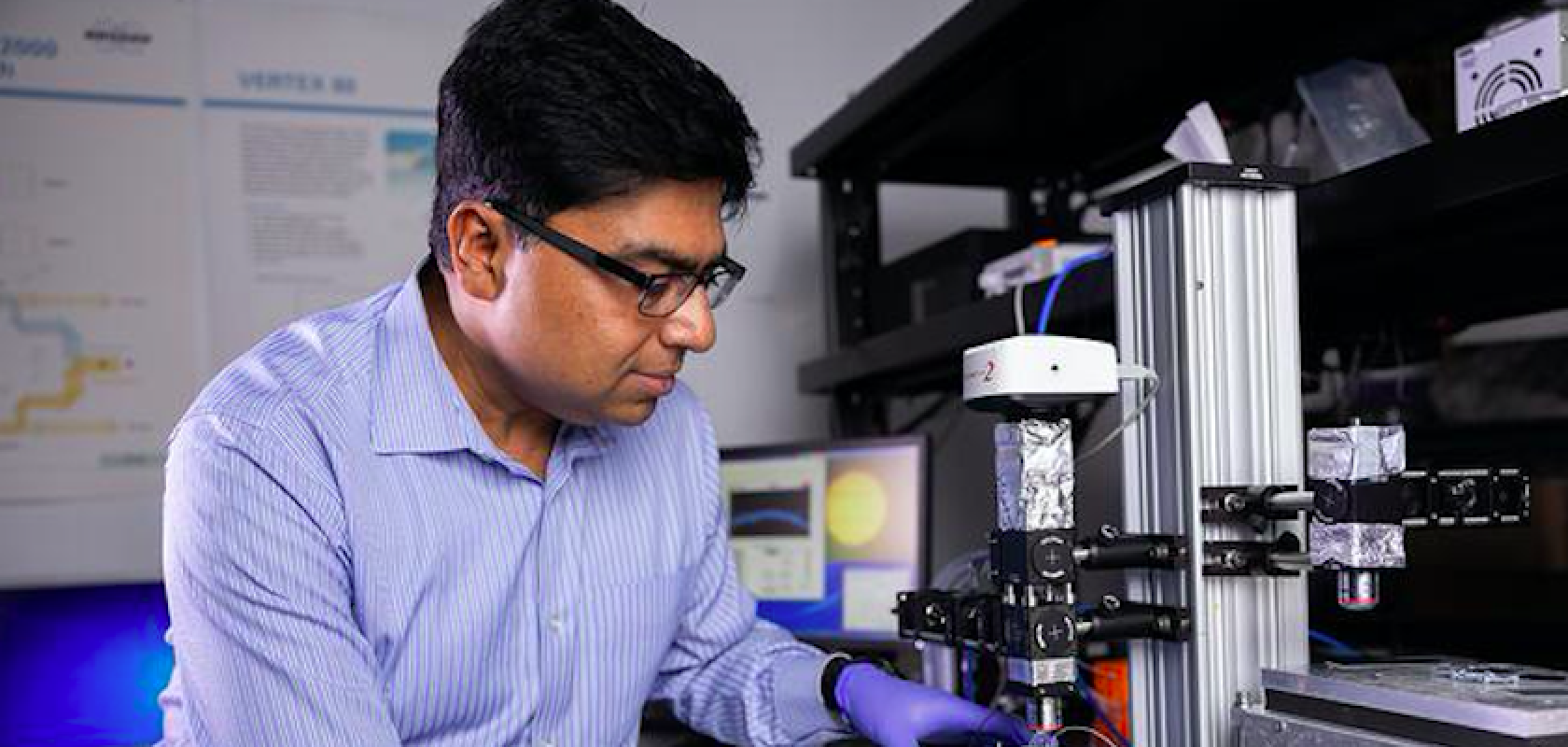Researchers at the University of Central Florida (UCF) have pioneered a novel photonic technique that utilises a unique ‘barcode’ system to identify chiral molecules, offering potential advancements in pharmaceutical and medical research.
Led by Professor Debashis Chanda from the UCF NanoScience Technology Centre, and funded by the US National Science Foundation, the new method harnesses the distinctive infrared fingerprints of molecules, enabling rapid identification.
Advancing molecular identification using ‘superchiral’ light
Chiral molecules, which are central to the research, exist as pairs that are mirror images of each other, known as enantiomers, and play a crucial role in biological and pharmaceutical applications.
To better understand these, the researchers used a new barcoding technique employing a specialised, pixelated 2D sensor array that interacts with precise light, to capture the vibrational absorptions of these molecules, which are then converted into unique barcodes.
Using a sensing platform made of specially engineered nanopatterned gold, the researchers had a means to identify the interactions between the plasmonic and photonic cavity modes that produce strong chiral ‘superchiral’ light.
A substrate, designed as an array of hole-disks coupled with asymmetric optical cavities, was created using cost-effective nanoimprinting techniques to be used as part of the set up. The addition of Fourier transform infrared instruments enabled precise illumination of the plasmonic metasurface with circularly polarised light, generating superchiral light that interacts strongly with target analytes.
As explained in Advanced Materials, the team used this ‘superchiral’ light to perform ‘surface-enhanced infrared absorption induced vibrational measurements in the mid-infrared spectral region. They did this by changing the geometrical parameters, with 25 of spectrally de-tuned sensors used in the 5x5 array. The sensors are made using straightforward nanoimprint lithography, making them robust and suitable for mass manufacture – essential for widespread future application.
Ultimately, when a molecule is added to this array, each sensing element produces a slightly different chiral response, resulting in a unique barcode that was key to the researchers findings. Chanda explained: “On molecular adsorption, the system’s response depends on the overlap of the molecule’s absorbance and the sensor's resonance. Our method encodes this response into a 'chiral barcode' for unique identification.”
“The measured signal is analysed and encoded to generate a ‘chiral barcode’ for uniquely identifying the adsorbed chiral molecule. We show applicability of the platform by analysing and generating unique chirality-based barcodes for an enantiomeric pair of small molecules, as well as a pair of spectrally similar larger chiral biomolecules based on very low volumes of analytes at ultra-low concentrations.”
Decoding the building blocks of pharmaceutical drugs
By being able to understand the nature of these chiral molecules, the researchers were able to gain crucial insights that could inform biological and pharmaceutical research. This is because the mirror image pairs of chiral molecules can each have different effects in the body or in chemical reactions.
The differing effects of enantiomers can greatly influence therapeutic outcomes, with nearly 56% of modern drugs being chiral. Often, these drugs are marketed as racemates – a mixture of both enantiomers – which can lead to unintended side effects.
Being able to conveniently generate unique chirality-based barcodes for various small molecules and larger biomolecules, even at ultra-low concentrations, can help to identify the chirality of drugs, proteins, and DNA at lower detection limits than traditional methods. Aritra Biswas, postdoctoral fellow and lead author, emphasised the system’s advantages over existing technologies, stating: “Unlike other platforms that require complex chiral nanostructures, our approach is inherently achiral, simplifying fabrication.”
Now, Chanda envisions the technology as a vital tool for advancing inexpensive and sensitive chiral drug identification methods, with important implications for medical research and the pharmaceutical industry.
Lead image: Antoine Hart


